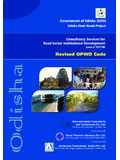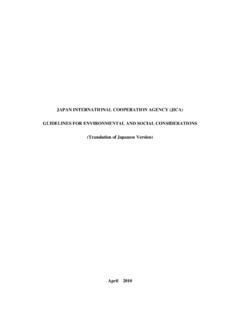Transcription of FEDERAL DEMOCRATIC REPUBLIC OF ETHIOPIA …
1 Xiii 1122 MMaarrcchh 22000099 AAddddiiss AAbbaabbaa FEDERAL DEMOCRATIC REPUBLIC OF ETHIOPIA ministry OF WORKS & URBAN DEVELOPMENT ETHIOPIAN ROADS AUTHORITY ETHIOPIA Road Sector Development Stage IV Project (APL4) In Support of Govt.'s RSDP (P106872) Re-Disclosure of Executive Summary of Environmental Impact Assessment Reports For 1. Mekenajo Dembi Dolo Road Upgrading Project 2. Welkite Hosaina Road Upgrading Project 3. Ankober Awasharba Road Construction Project xiv Table of Contents TABLE OF CONTENTS .. XIV PART I MEKENAJO-DEMBI DOLO LINK ROAD PROJECT .. 1 PART II WELKITE-HOSAINA LINK ROAD PROJECT .. 12 PART III ANKOBER-AWASHARBA LINK ROAD PROJECT .. 24 xv Part I Mekenajo-Dembi Dolo Link Road Project 1 Introduction Mekenajo - Dembidolo Road project is located in the West Wollega Zone of the Oromia Regional State.
2 The proposed road route traverses eight woredas of the zone namely: Ayira Guliso, Gawo Dale, Gimbi, Hawa Walel, Lalo Assabi , Seyo, Dale Sedi and Yubdo woredas, and it connects town centers and several villages of those woredas. The project route map is shown in Fig The project is among the road project works planned by the Ethiopian Roads Authority (ERA) for the transport sector development. The Ethiopian Road Authority has secured fund from IDA for the implementation of the project. ERA commissioned SPANS Consultants in association with Beza- Consultants to undertake review of the feasibility study, review of the Environmental Impact Assessment (EIA), review of the detailed engineering design and tender document preparation of the Mekenajo Dembidolo Road project. The Environmental Impact Assessment review has been conducted in accordance with the requirements of the Terms of Reference (TOR).
3 The EA report prepared in June 2003 has been revised and updated to reflect the current situation of the project area. This EIA report, therefore, represents the revised version of the previous report. Existing Road and Environment The existing road is a gravel surfaced RR-50 standard road. The width of the existing road ranges from to meters. The road starts from the town center of Mekenajo (km 0+000) and ends at the town center of Dembidolo (180+596). The road pavement along the project road is severely damaged at some places. During the field visit extensive pavement deterioration was observed at stations 8+100 9+200, 86+000 96+600, 113+100 136+800, and 139+800 145+700, where comfort speed was poor to very poor at 40Km/h. The road project falls in the West Wollega zone, in the Western part of the Oromia National Regional State.
4 West Wollega zone lies between 8o12 N and 10 o 03N latitudes and 34 o 08 E and 36 o 10 E longitudes and is characterized by physiographic features of mountain, undulating and rolling plateaus, and gorges ranging from 500 to 3200masl. Western Oromia Sub region on the other hand extends from 07 o 13 16 to 10 o 20 10 N latitude and 34 o 08 30 to 37 o 40 53 E longitude. The Altitude of the sub region ranges from 500masl up to over 3000masl. Biological & Physical Environment The road route traverses mainly mountainous and rolling topographic land forms, with smaller section of flat terrain. The project road follows a ridge in the initial part of the road up to km 30+000. The first 20 km part of the road is saddled with sharp curves and erosion gullies. The road traverses escarpment section from km 33 up to Ayira town.
5 From Ayira to the end of the project most of the terrain is mountainous and rolling sections. West Wollega zone is one of the densely vegetation covered areas of the country. The area is covered with forests and tree crops including coffee and fruit trees. The Climatic Climax Vegetation ( the vegetation that would develop in the absence of human interference, only by the natural environmental conditions) of the zone includes; broad leafed forest, grasslands and wetlands/marshlands. Broad leafed forest trees are found almost in all districts of the zone including those traversed by the project road. The influence area of road route is mainly dominated by Aningeria species and Olea species. Grasslands consisting of different species cover limited areas in 2 the drier south and south western areas while wetlands/marshlands are localized in the central western part of the zone.
6 There are significant wildlife habitats in the West Wellega zone including the woredas traversed by the road project. The common wild life of the zone include Lion, Buffalo, Hippopotamus, otter, Civet, Bushbuck, Roan Antelope, Leopard, striped hyena, Columbus monkey, Patas monkey, hamadryads, baboon and Klipspringer. West Wollega Zone has rich mineral resources including ferrous mineral and precious metals like gold and platinum. The precambrian era rocks are sources for the ferrous, none ferrous and the precious metals, while the Cenozoic era sedimentary rocks are sources of the iron and coal. The mineral of the zone consists of coal, iron, nickel, precious metals (Gold and Platinum), non-ferrous minerals (Cobalt, molybdenum, titanium, Uranium and phosphate), and industrial and construction mineral like marble.
7 Some of the localities with high mineral deposits fall with in the influence area of the road project; this includes Yubdo, Gimbi, Dembidolo, Guliso Hena. Water Resources and Wetland / Marshland Areas West Wollega Zone has high water resource potential both surface and sub surface water resources. Most of the rivers of the zone are perennial, and there are also seasonal streams. Ground water source is shallow with depths ranging up to 100m. The eastern and south eastern part of the zone, also constituting the districts traversed by the road project has pocket areas of unconsolidated alluvium aquifer with high productivity yield and unconsolidated sediments forming low productivity aquifer. Wetlands/marshlands generally support a wide range of biotical, hydrological, and physical processes which result in ecosystem function and the provision of valuable goods or services.
8 The wetland/marshland and flood plains in the woredas traversed by the road are used as grazing grounds especially during the dry weather periods of the area and also for crop harvest in the dry seasons. Almost all the woredas have such marshland areas, though the plot areas differ from woreda to woreda. The total area of wetland/marshland in those woredas is estimated at 3000 hectare. There are however very limited wetland/marshland areas along the Project Road route. The wetland/marshland sites in the project area are those seasonally water inundated plain lands along the river banks traversed by the road. There is no extended wetland/marshland area specially designated as protected site/ conservation site. The identified small/limited wetland/marshland areas along the road route are found around km 37, 98, 126 and 170 mainly along river courses.
9 All these wetlands/marshlands are relatively small in size but have useful ecological functions. National Parks and Protected Areas There is no designated national park. There are a number of potential protected areas, such as wildlife reserve and conservation areas available in West Wellega zone and the Western Oromia is endowed with forest and water resources forming areas potentially rich in wildlife conservation. However, according to site investigations by the consultant and also as confirmed by the Oromia Environmental Protection Office (re-confirmed in January 2009), there is neither park nor protected conservation site along the road route and in the proximity of the road project site. All of the designated protected areas and conservation worthy sites are very far from the project influence areas.
10 The road project works, both for the main activities of road construction and for the ancillary works neither touch nor will be located in any one of those physical resource sites as they are at far distance from the route corridor. There is plot of planted forest land (mainly juniper us trees) from station 16 + 900km up to station 19 +000km. along the road route, which is used as recreational site for those residing in the area. 3 Historical and Cultural Heritages According to the Atlas of west Oromia, Historical and cultural resources in the West Oromia Sub Region include: Palaces of Aba Jiffar & Kumssa Moroda, Mosques of Aba Jiffar and residential houses. Places of worship like traditional mosques, monasteries and churches are found in the sub region. Among the traditional places the Beluke in Wellega and the Sida Abachagi in Illubabor are the prominent ones.
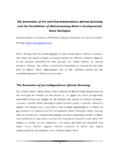
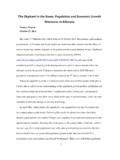
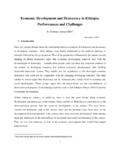
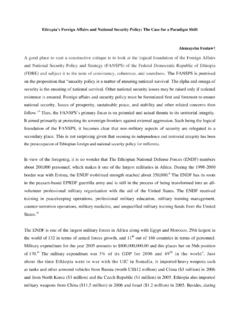
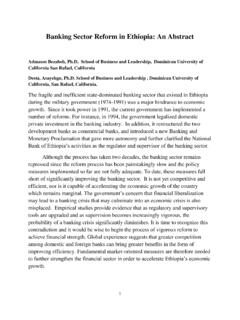
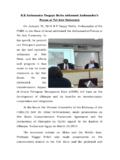


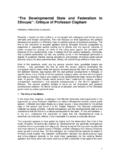
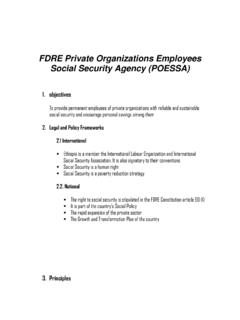
![STANDARD TERMS OF REFERENCE [TOR] FOR EIA …](/cache/preview/d/e/5/4/b/b/3/2/thumb-de54bb32337e7fb2c68ef704255eae61.jpg)
